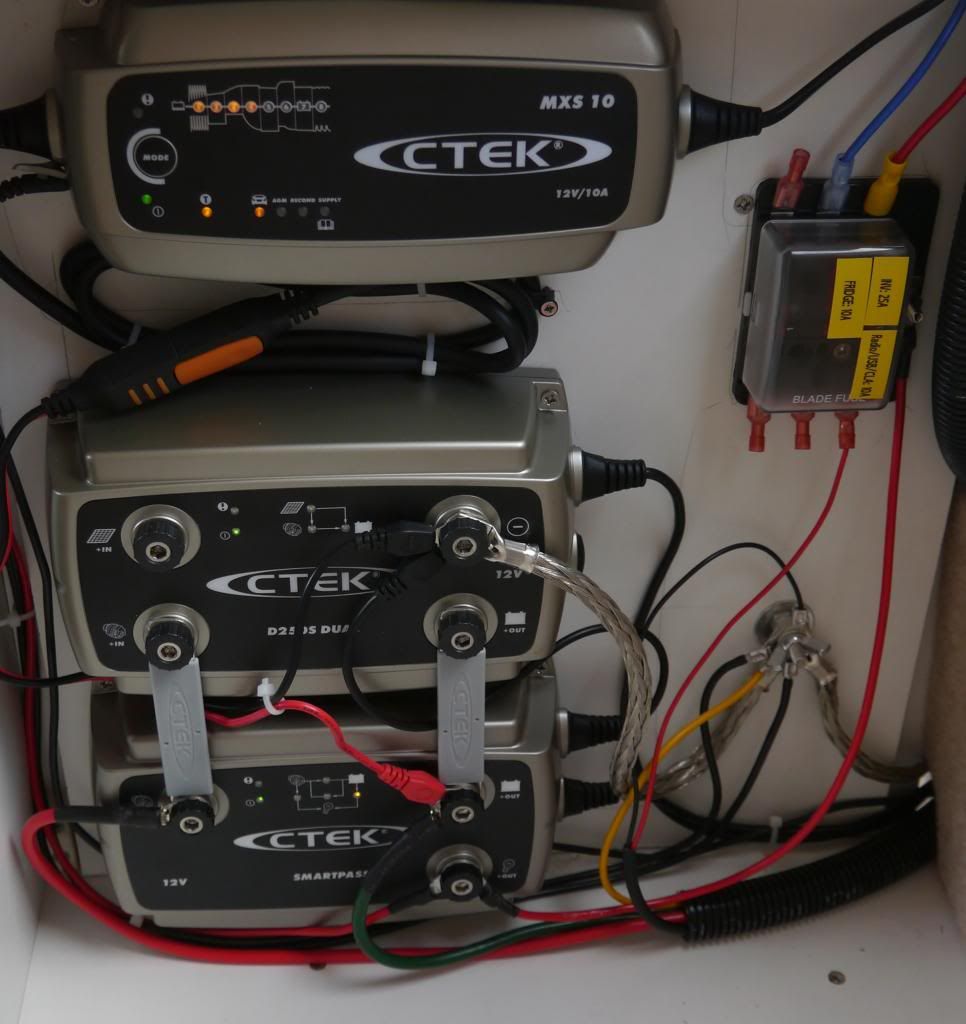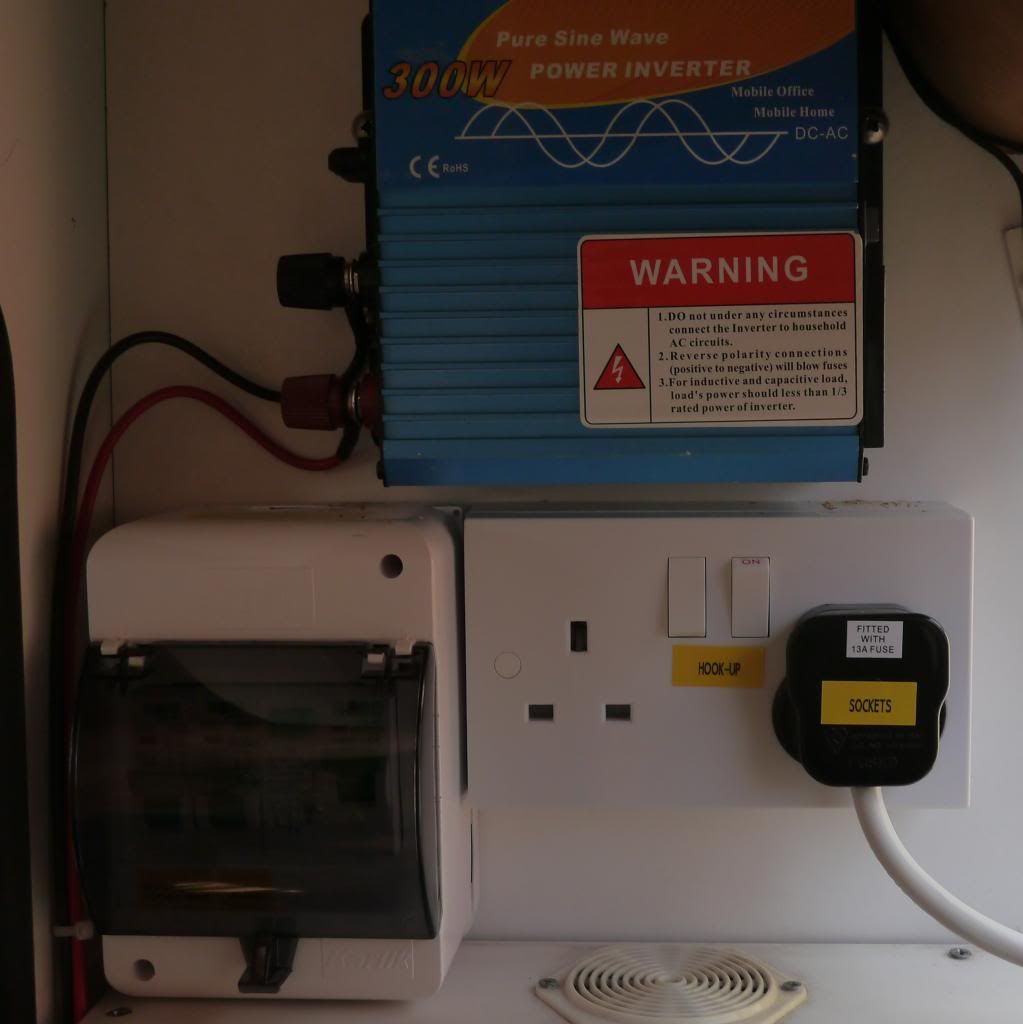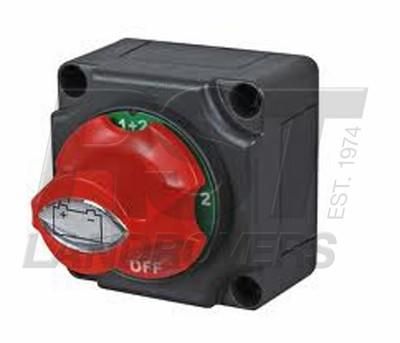I went for the CTEK units in the end, but I also added a CTEK intelligent charger to bypass the Zig's 'dumb' charger. Today I finished installing everything and rewiring all my consumers. It was a big rewiring task, and it's taken a few evenings, but I'm pleased with the result.
Here are the three units, all installed below the back of the Zig on the wardrobe wall. Together they provide mains charging of both batteries, intelligent battery-to-battery charging from the alternator, an 80A LVD for all the consumers, and an MPPT controller for a solar panel (yet to be added). Both batteries will be properly maintained from any or all of the charging sources, so hopefully it's a fit-and-forget-system.

I integrated the new units with the Zig as much as possible, but it meant some rewiring inside the unit. I reused terminals 1 and 2 (which used to take the input from the starter battery) to take the switched mains, so that I could wire the CTEK mains charger into them. The mains switch on the front of the Zig now does the same job that it used to, except that instead of controlling the built-in charger it now controls the CTEK intelligent charger. The mains fuse on the front panel also protects the CTEK charger. I reused the now redundant 'Touring/On-Site switch' as a Fridge power switch, and that meant feeding the switch terminals to a new chocolate block. And I took a feed from the CTEK LVD to terminal 4, so that the consumer circuits in the Zig can't flatten the leisure battery.

I got busy with my label printer, to help me remember what everything now does!

With a decent sized LVD I was able to wire in my inverter and potentially make use of the full 300W. I've installed it above the back of the Zig, and modified my mains wiring so that I can run the van's interior mains sockets either from the hook-up or from the inverter.

Apart from it all being completely automatic, fit-and-forget, and safe to leave hooked-up permanently, one of the best bits is the way it's tidied up my battery boxes.
Leisure battery:

Starter battery:

Next job is to fit a battery change-over switch so that I can add a spare leisure battery. It's now a lot easier to do this than it was before, since it'll just need a single chunky wire and a new earth strap. The switch I've bought has a '1+2' setting, and although the CTEK system might be OK maintaining both batteries in parallel I plan to simply use either battery 1 or battery 2 - by switching between them occasionally I should always have a reserve, plus putting the spare in the space next to the engine might help to correct my van's lean a bit!

I bought all my cable from a local place that was recommended to me on this forum -
Vehicle Wiring Products Ltd. I'd never come across 'thinwall' cable before, and I'm still surprised how much smaller the outside diameter is for the same current capacity. For instance, that thin red wire feeding the auxiliary fuse box in my first photo above is 4mm2, rated at 39A








